Abstract
The characteristics of a knemometer designed for accurate lower leg measurement in babies were assessed. Repeated measurement of a 100 mm Perspex rod gave a mean length of 99.993 mm and a mean SD of 0.058. When used to measure leg length, technical error of the measurement technique was 0.31 with a mean leg length of 98.49 mm (coefficient of variation 0.31%). Leg lengths measured at birth in 324 babies from 23 to 42 weeks' gestation gave an estimated in utero leg length velocity of 0.43 mm/day (95% confidence interval 0.41 to 0.45). Assessment of interobserver variation showed poor agreement in absolute values of leg length, although similar estimates of leg length velocity could be obtained. The neonatal knemometer allows measurements to be made in situations where conventional growth measurements are not possible. It is believed that knemometry has an important role in accurate evaluation of factors that can influence short term bone growth.
Full text
PDF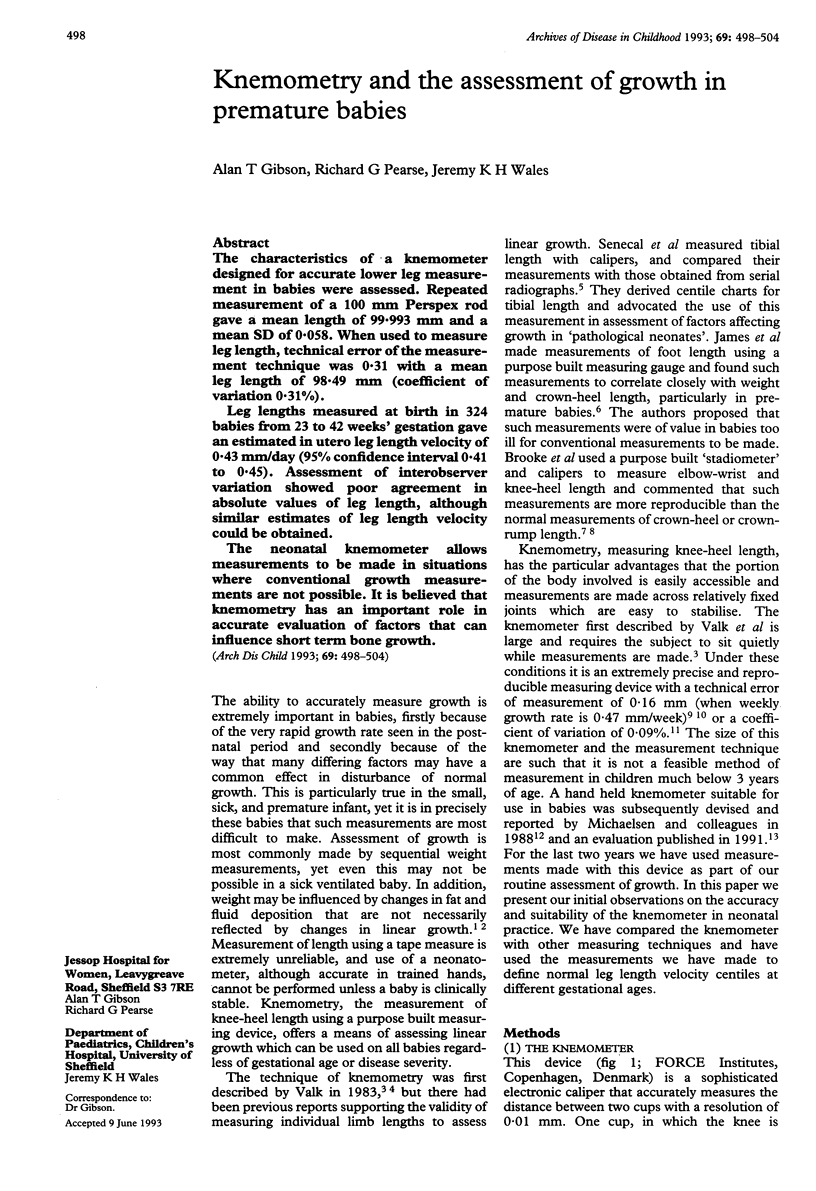
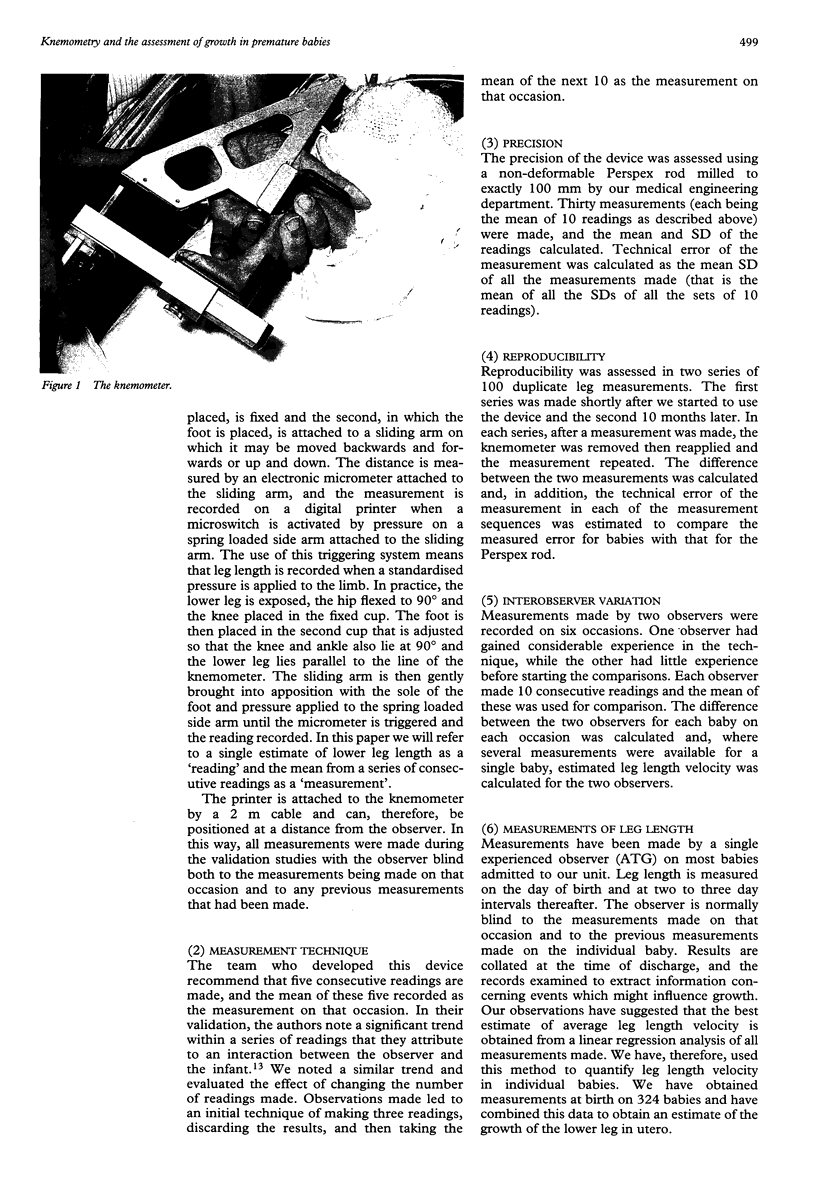
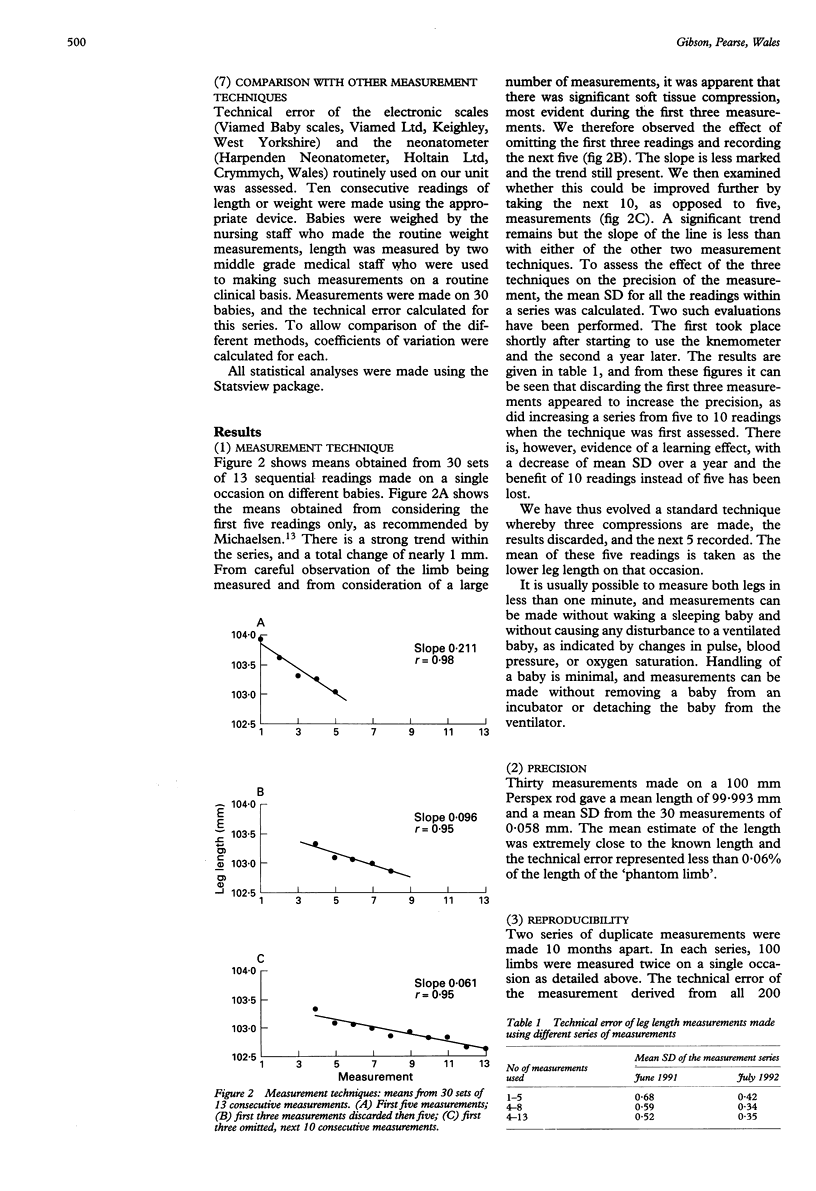
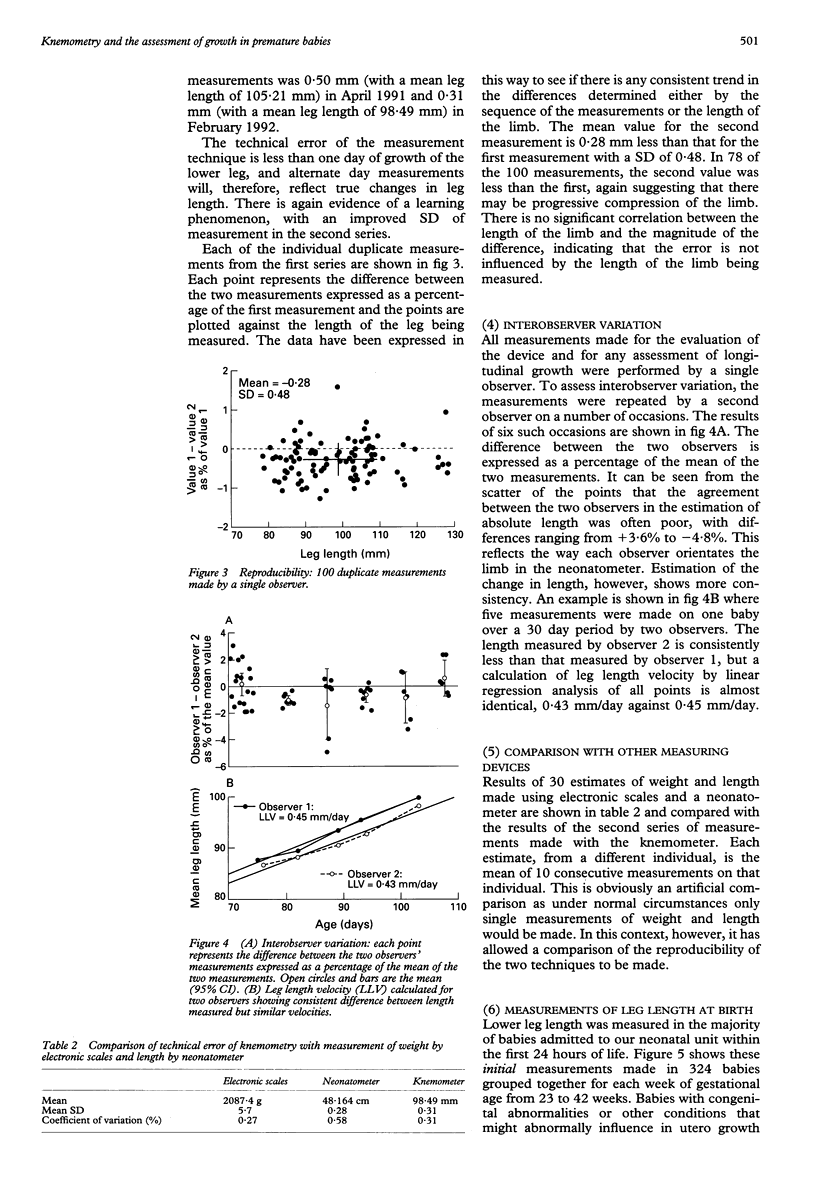
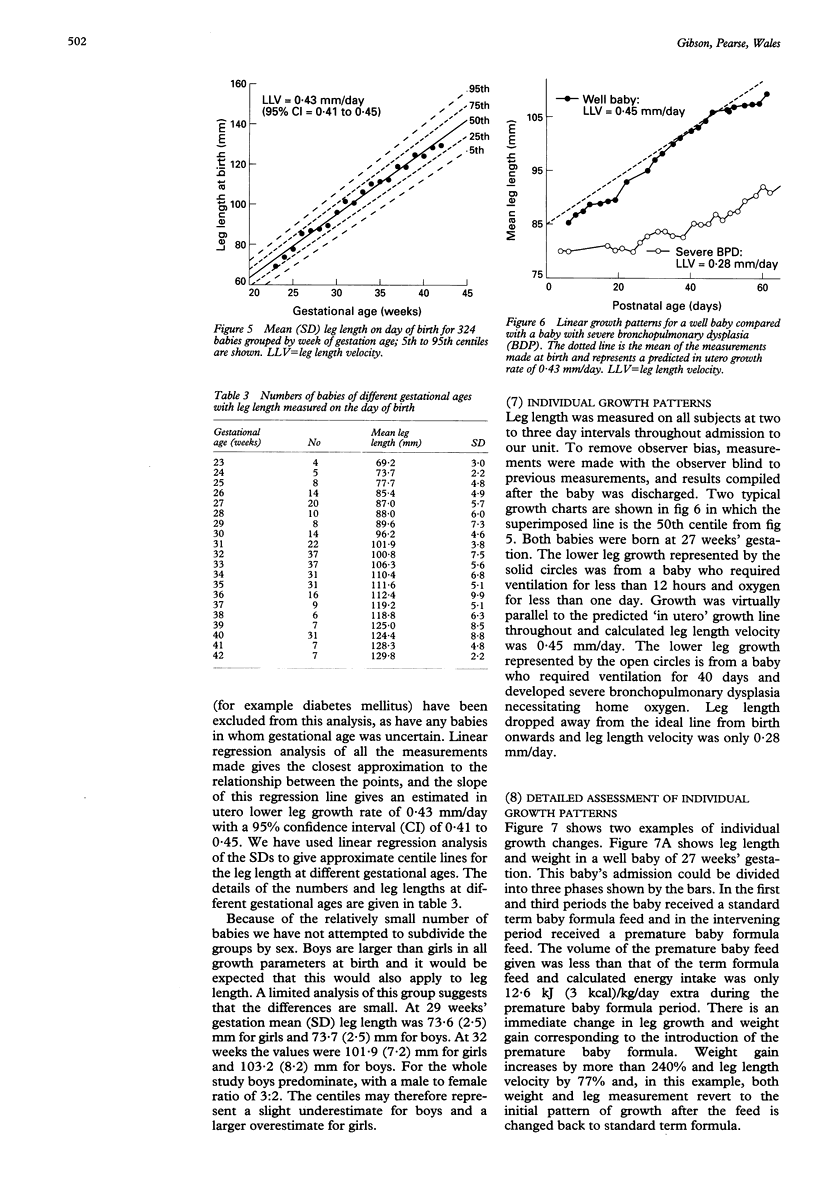
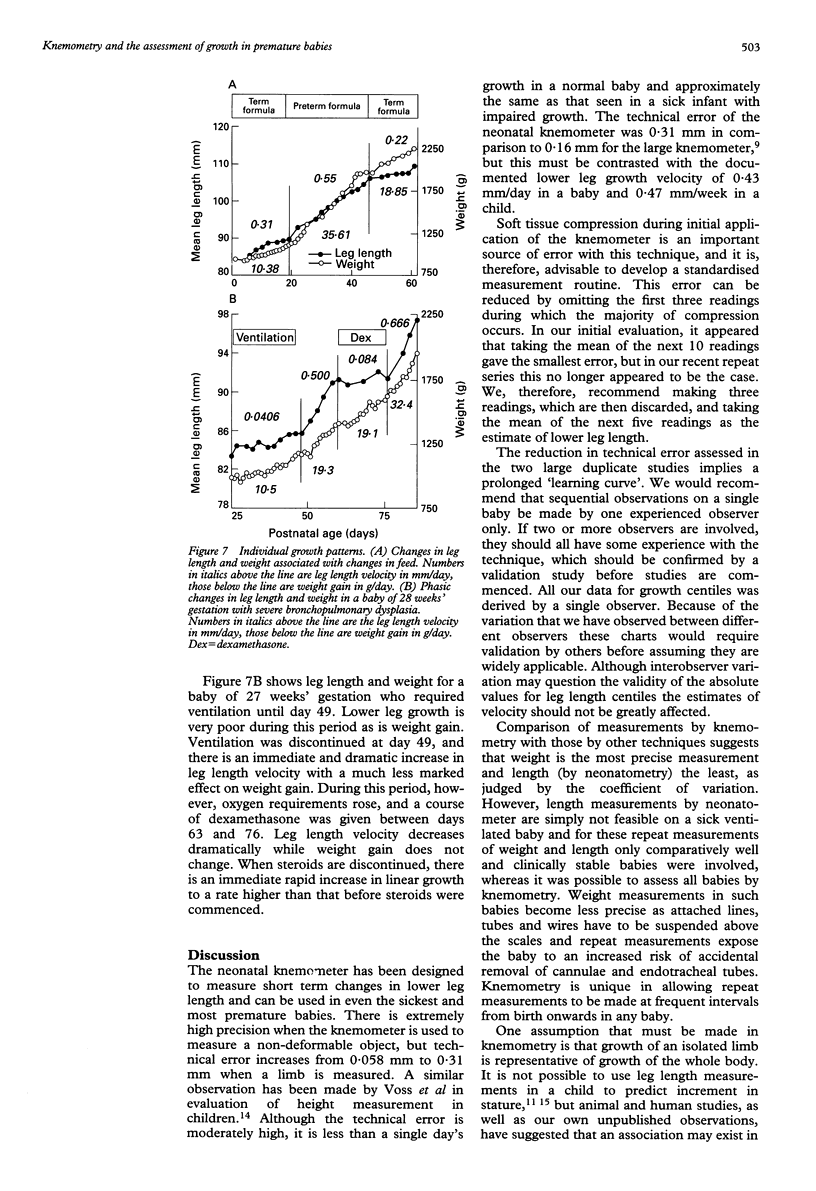
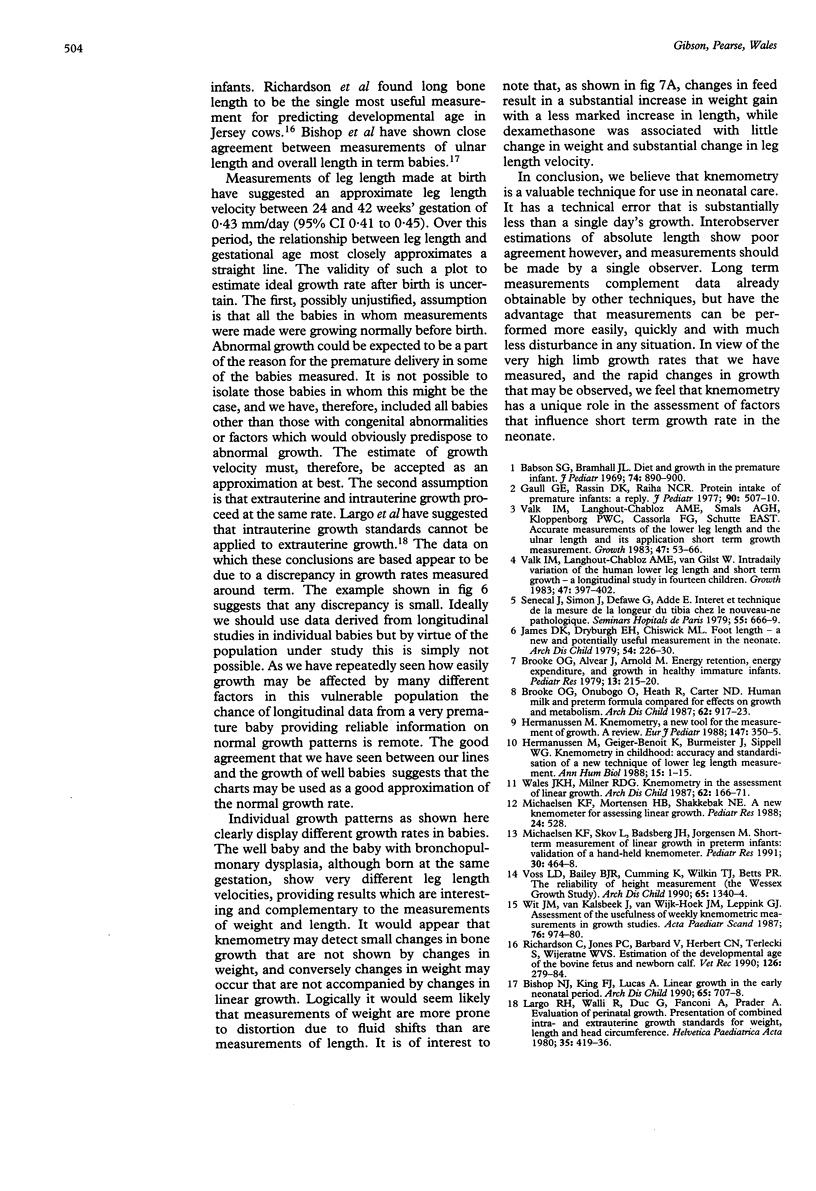
Images in this article
Selected References
These references are in PubMed. This may not be the complete list of references from this article.
- Babson S. G., Bramhall J. L. Diet and growth in the premature infant. The effect of different dietary intakes of ash-electrolyte and protein on weight gain and linear growth. J Pediatr. 1969 Jun;74(6):890–900. doi: 10.1016/s0022-3476(69)80223-4. [DOI] [PubMed] [Google Scholar]
- Bishop N. J., King F. J., Lucas A. Linear growth in the early neonatal period. Arch Dis Child. 1990 Jul;65(7 Spec No):707–708. doi: 10.1136/adc.65.7_spec_no.707. [DOI] [PMC free article] [PubMed] [Google Scholar]
- Brooke O. G., Alvear J., Arnold M. Energy retention, energy expenditure, and growth in healthy immature infants. Pediatr Res. 1979 Apr;13(4 Pt 1):215–220. doi: 10.1203/00006450-197904000-00001. [DOI] [PubMed] [Google Scholar]
- Brooke O. G., Onubogu O., Heath R., Carter N. D. Human milk and preterm formula compared for effects on growth and metabolism. Arch Dis Child. 1987 Sep;62(9):917–923. doi: 10.1136/adc.62.9.917. [DOI] [PMC free article] [PubMed] [Google Scholar]
- Gaull G. E., Rassin D. K., Räihä C. R. Protein intake of premature infants: a reply. J Pediatr. 1977 Mar;90(3):507–510. doi: 10.1016/s0022-3476(77)80751-8. [DOI] [PubMed] [Google Scholar]
- Hermanussen M., Geiger-Benoit K., Burmeister J., Sippell W. G. Knemometry in childhood: accuracy and standardization of a new technique of lower leg length measurement. Ann Hum Biol. 1988 Jan-Feb;15(1):1–15. doi: 10.1080/03014468800009411. [DOI] [PubMed] [Google Scholar]
- Hermanussen M. Knemometry, a new tool for the investigation of growth. A review. Eur J Pediatr. 1988 May;147(4):350–355. doi: 10.1007/BF00496409. [DOI] [PubMed] [Google Scholar]
- James D. K., Dryburgh E. H., Chiswick M. L. Foot length--a new and potentially useful measurement in the neonate. Arch Dis Child. 1979 Mar;54(3):226–230. doi: 10.1136/adc.54.3.226. [DOI] [PMC free article] [PubMed] [Google Scholar]
- Largo R. H., Wälli R., Duc G., Fanconi A., Prader A. Evaluation of perinatal growth. Presentation of combined intra- and extrauterine growth standards for weight, length and head circumference. Helv Paediatr Acta. 1980 Oct;35(5):419–436. [PubMed] [Google Scholar]
- Michaelsen K. F., Skov L., Badsberg J. H., Jørgensen M. Short-term measurement of linear growth in preterm infants: validation of a hand-held knemometer. Pediatr Res. 1991 Nov;30(5):464–468. doi: 10.1203/00006450-199111000-00013. [DOI] [PubMed] [Google Scholar]
- Richardson C., Jones P. C., Barnard V., Hebert C. N., Terlecki S., Wijeratne W. V. Estimation of the developmental age of the bovine fetus and newborn calf. Vet Rec. 1990 Mar 24;126(12):279–284. [PubMed] [Google Scholar]
- Sénécal J., Simon J., Defawe G., Adde E. Intérêt et technique de la mesure de la longueur du tibia chez le nouveau-né pathologique. Sem Hop. 1979 Apr 8;55(13-14):666–669. [PubMed] [Google Scholar]
- Valk I. M., Chabloz A. M., Smals A. G., Kloppenborg P. W., Cassorla F. G., Schutte E. A. Accurate measurements of the lower leg length and the ulnar length and its application in short term growth measurement. Growth. 1983 Spring;47(1):53–66. [PubMed] [Google Scholar]
- Valk I. M., Langhout Chabloz A. M., van Gilst W. Intradaily variation of the human lower leg length and short term growth--a longitudinal study in fourteen children. Growth. 1983 Winter;47(4):397–402. [PubMed] [Google Scholar]
- Voss L. D., Bailey B. J., Cumming K., Wilkin T. J., Betts P. R. The reliability of height measurement (the Wessex Growth Study). Arch Dis Child. 1990 Dec;65(12):1340–1344. doi: 10.1136/adc.65.12.1340. [DOI] [PMC free article] [PubMed] [Google Scholar]
- Wales J. K., Milner R. D. Knemometry in assessment of linear growth. Arch Dis Child. 1987 Feb;62(2):166–171. doi: 10.1136/adc.62.2.166. [DOI] [PMC free article] [PubMed] [Google Scholar]
- Wit J. M., van Kalsbeek E. J., van Wijk-Hoek J. M., Leppink G. J. Assessment of the usefulness of weekly knemometric measurements in growth studies. Acta Paediatr Scand. 1987 Nov;76(6):974–980. doi: 10.1111/j.1651-2227.1987.tb17274.x. [DOI] [PubMed] [Google Scholar]



